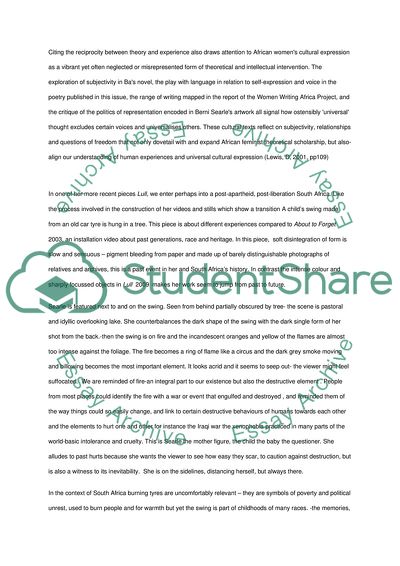Cite this document
(The Poetry of Berni Searle Research Paper Example | Topics and Well Written Essays - 1000 words, n.d.)
The Poetry of Berni Searle Research Paper Example | Topics and Well Written Essays - 1000 words. Retrieved from https://studentshare.org/literature/1736846-art-history-from-1945-to-the-present-focus-for-this-paper-performance-art
The Poetry of Berni Searle Research Paper Example | Topics and Well Written Essays - 1000 words. Retrieved from https://studentshare.org/literature/1736846-art-history-from-1945-to-the-present-focus-for-this-paper-performance-art
(The Poetry of Berni Searle Research Paper Example | Topics and Well Written Essays - 1000 Words)
The Poetry of Berni Searle Research Paper Example | Topics and Well Written Essays - 1000 Words. https://studentshare.org/literature/1736846-art-history-from-1945-to-the-present-focus-for-this-paper-performance-art.
The Poetry of Berni Searle Research Paper Example | Topics and Well Written Essays - 1000 Words. https://studentshare.org/literature/1736846-art-history-from-1945-to-the-present-focus-for-this-paper-performance-art.
“The Poetry of Berni Searle Research Paper Example | Topics and Well Written Essays - 1000 Words”, n.d. https://studentshare.org/literature/1736846-art-history-from-1945-to-the-present-focus-for-this-paper-performance-art.


